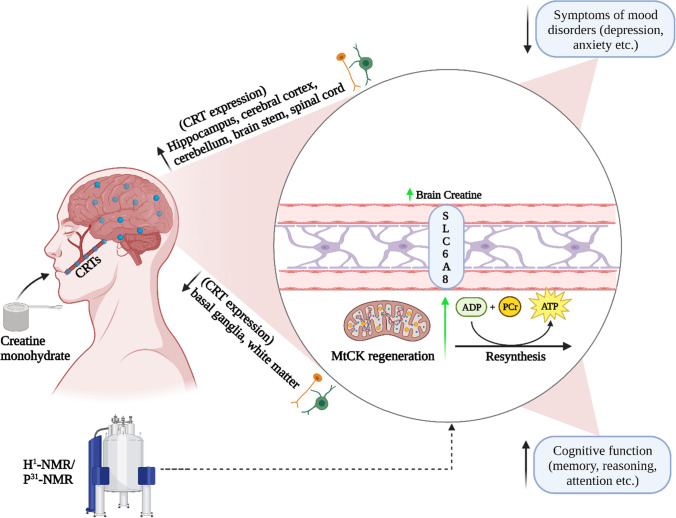Correction to: Sports Medicine 10.1007/s40279-023-01870-9
Figure 1 was missing from this article. The figure should have appeared as shown below (Fig. 1)
Fig. 1.
Potential effects of creatine monohydrate on measures of brain function. Creatine reaches the cytosol via CRT’s at the blood–brain barrier, neurons, and oligodendrocytes cells and contributes to the maintenance of glycolytic ATP levels. Creatine enters the mitochondria via MtCKs and converts ATP to PCr through oxidative phosphorylation. ATP and PCr are able to circulate from the mitochondria back into the cytosol, regulating energy requirements which in turn may enhance brain energy metabolism. (ADP, adenosine diphosphate; ATP, adenosine triphosphate; CRT, creatine transporter, MtCK, mitochondrial creatine kinase; NMR, nuclear magnetic resonance; PCr, phosphocreatine)
The original article has been corrected.



